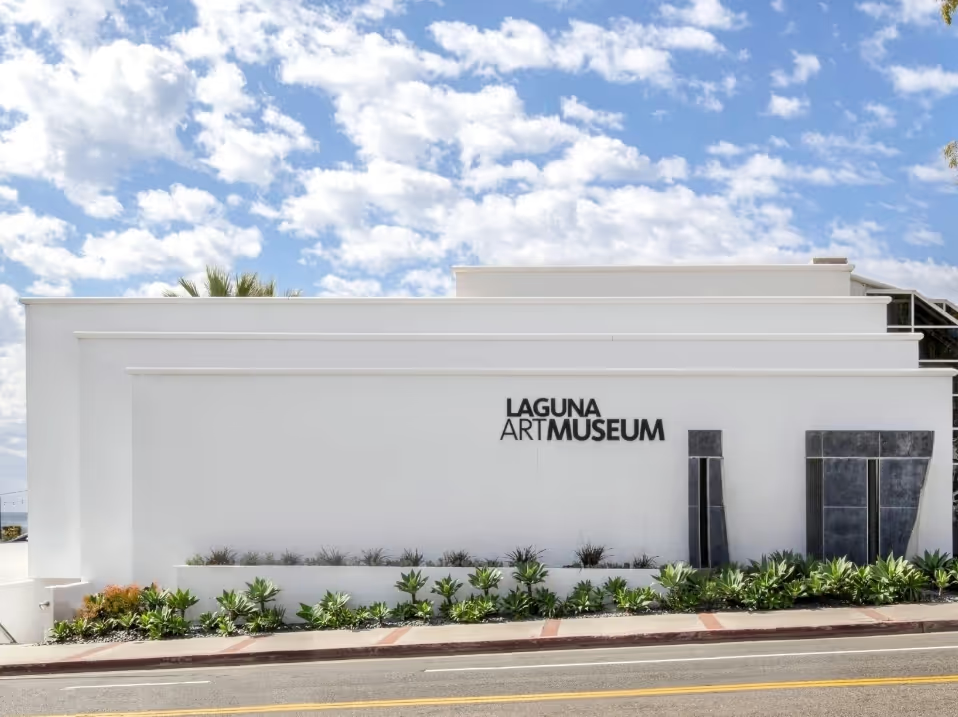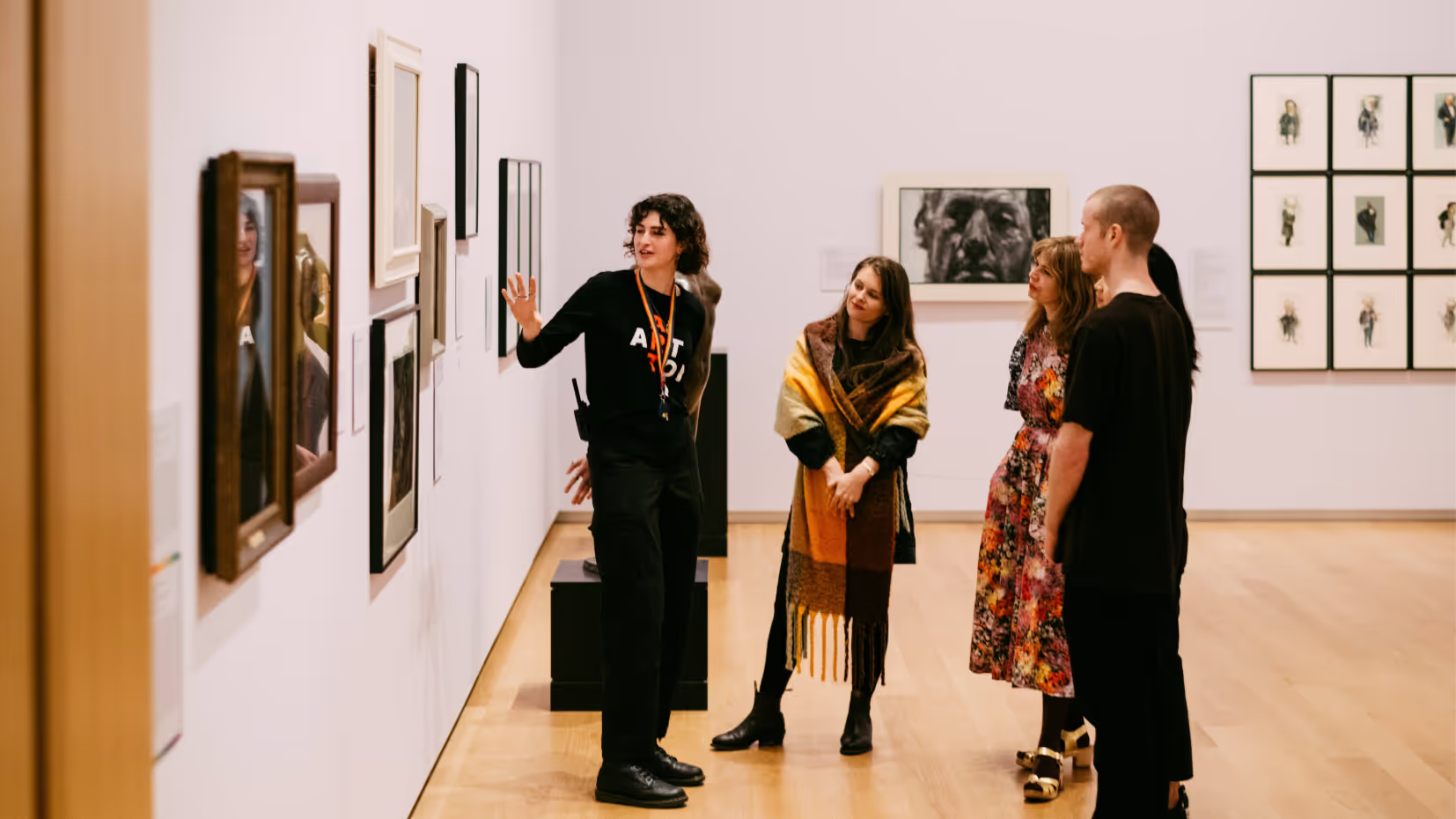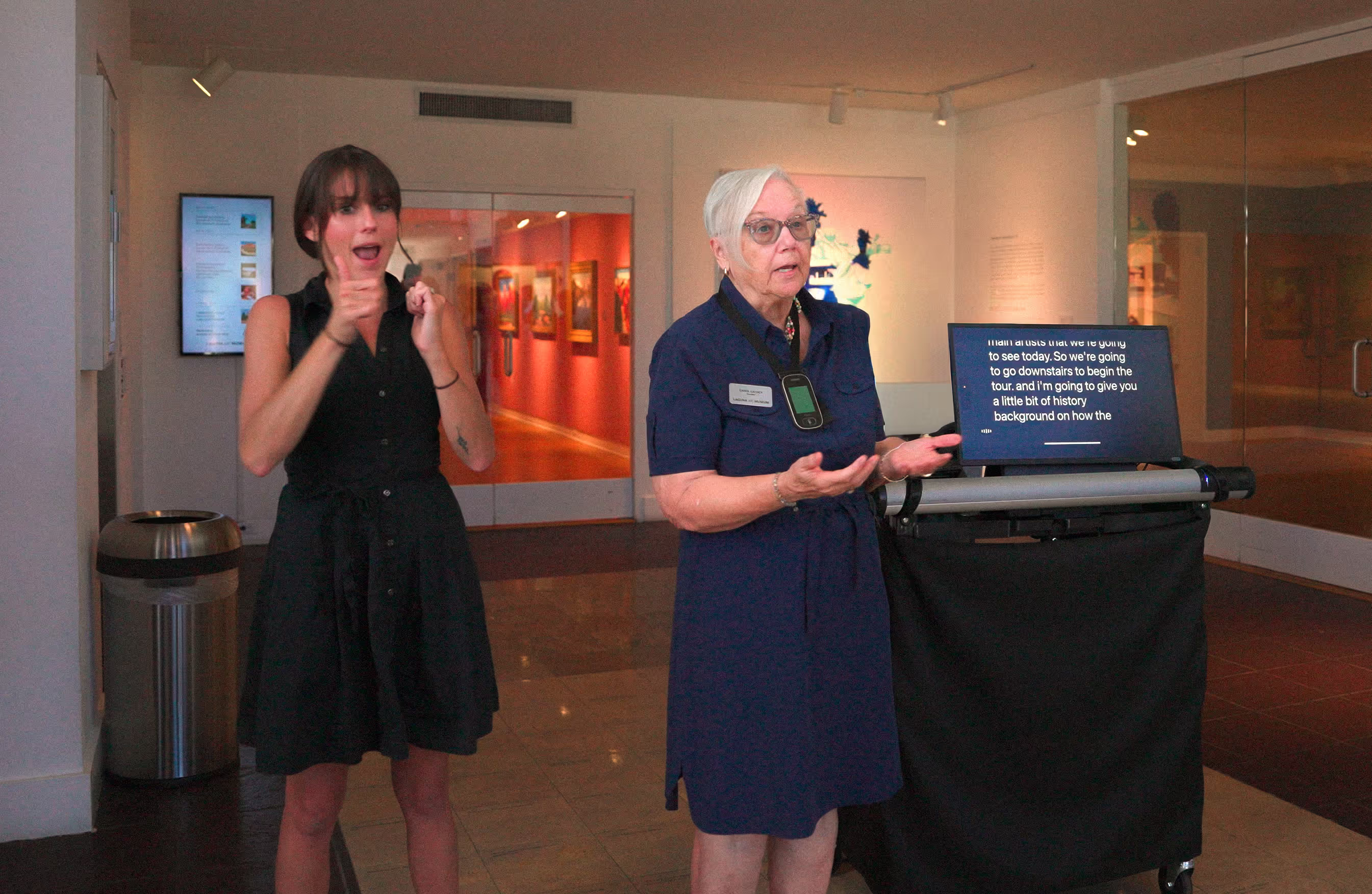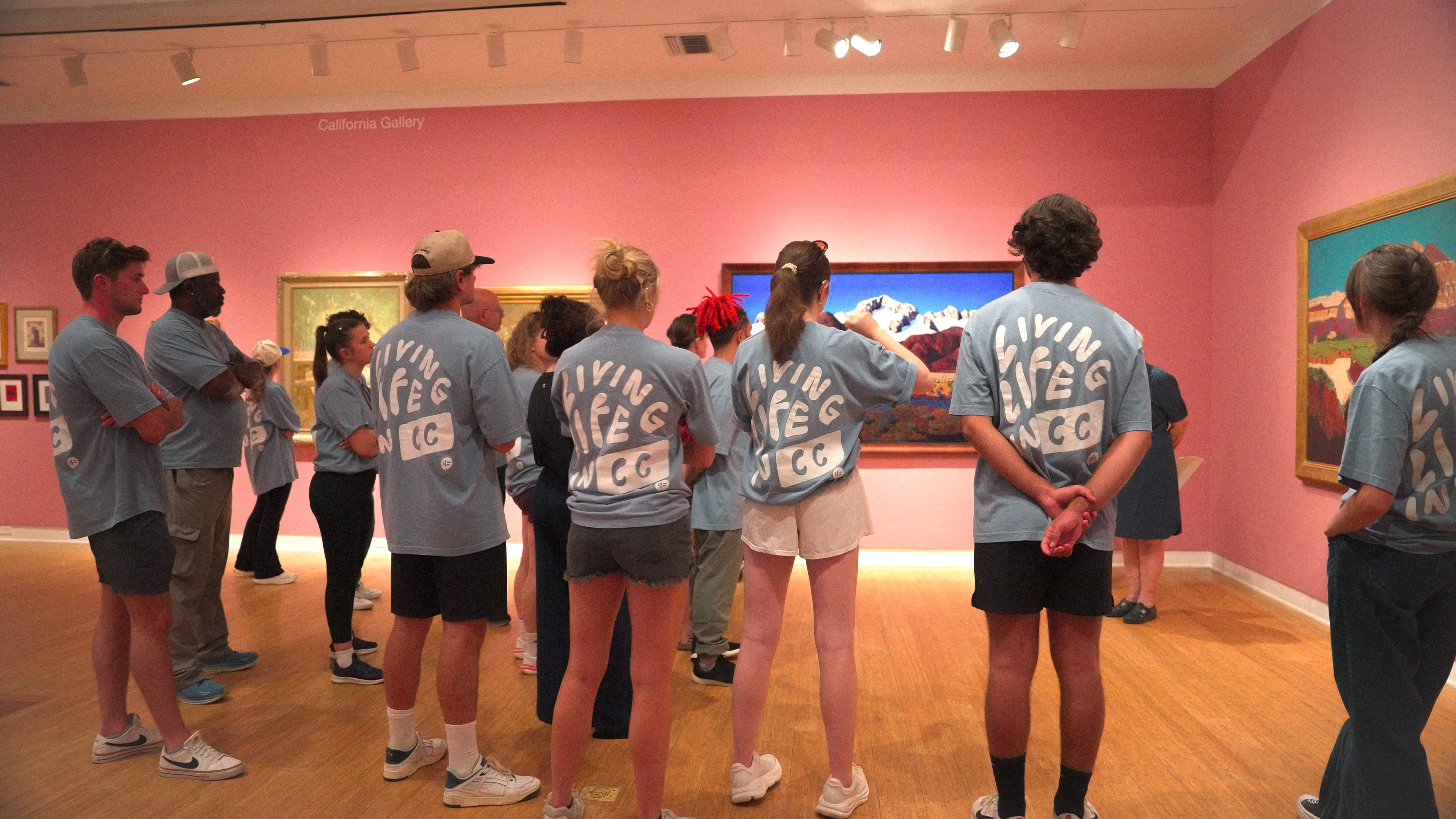Our company recently hosted the Empower Retreat, a weekend that brings together D/deaf and hard of hearing creators and advocates for content creation, outdoor adventure, and meaningful community. After holding the first retreat last year, we were thrilled to bring it back again.
One of this year’s highlights was a private tour of the Laguna Art Museum. As we prepared for that experience, we asked ourselves a guiding question:
How can we take an activity that hasn’t always been designed with D/deaf and hard of hearing visitors in mind, and reimagine it to be fully inclusive?

Art tours are typically centered on spoken storytelling. While engaging for hearing audiences, they often leave D/deaf and hard of hearing participants on the sidelines. Common barriers include:
In short, the richness of the tour—the storytelling, the spontaneous exchanges, the collective learning—is often out of reach.
That’s why we set out to change it. Here are five strategies we used to reimagine an art tour for the Empower Retreat.

The barrier: Many museums lack experience hosting D/deaf and hard of hearing visitors, so accessibility isn’t built into their tours.
Our approach: From the outset, we partnered with the Laguna Art Museum, whose staff embraced the opportunity to co-create an inclusive experience. By engaging them early, accessibility became a central design feature rather than an afterthought.
The barrier: In their enthusiasm to share the art, docents often face the paintings rather than the people. For D/deaf and hard of hearing visitors, this simple habit creates a major communication barrier.
Our approach: We provided the museum team with our accessibility guide, which outlined simple but powerful practices:
These adjustments directly addressed sightline and acoustic challenges, ensuring the docent’s commentary was easier to follow.

The barrier: Without preparation, captioning technology can struggle with accuracy, especially with proper nouns, echoey spaces, or when the docent faces away. Audience questions are also often missed.
Our approach: We conducted a full test of our automated captioning app before the retreat. This step was critical because people with hearing loss are not trained to “fill in the blanks” on unfamiliar words—especially artist names, titles, and specialized terms. If captions are inaccurate, those details are simply lost.
During the dry run, we were able to:
This rehearsal ensured the captions were reliable, and gave the docent confidence in delivering her tour inclusively.
The barrier: Captions are typically fixed in one place, while tours are mobile. Once the group moves, captions vanish.
Our approach: Our COO, Paul, devised a creative solution: the accessibility CART on cart (pun fully intended).
The cart ensured accessibility moved with the group. It featured:
Looking ahead, we hope to integrate Bluetooth Auracast, which would allow attendees to connect directly through their personal devices.
The cart transformed a logistical challenge into a creative innovation and became a symbol of how design thinking can unlock inclusion.

The barrier: Many institutions treat accessibility as a one-time fix, relying on outdated or incompatible devices that don’t meet the needs of today’s D/deaf and hard of hearing visitors.
Our approach: We treat accessibility as a living process. From refining our captioning app to planning for future Bluetooth upgrades, we commit to evolving alongside technology and community needs. Accessibility isn’t static; it’s about continual problem-solving and adaptation.
At the Empower Retreat, accessibility isn’t an afterthought—it’s the foundation. By reimagining something as traditional as an art tour, we showed how collaboration, preparation, and creativity can turn barriers into opportunities. Accessibility doesn’t stand still; it moves with the experience, and with the community it’s meant to serve.

InnoCaption provides real-time captioning technology making phone calls easy and accessible for the deaf and hard of hearing community. Offered at no cost to individuals with hearing loss because we are certified by the FCC. InnoCaption is the only mobile app that offers real-time captioning of phone calls through live stenographers and automated speech recognition software. The choice is yours.
InnoCaption proporciona tecnología de subtitulado en tiempo real que hace que las llamadas telefónicas sean fáciles y accesibles para la comunidad de personas sordas y con problemas de audición. Se ofrece sin coste alguno para las personas con pérdida auditiva porque estamos certificados por la FCC. InnoCaption es la única aplicación móvil que ofrece subtitulación en tiempo real de llamadas telefónicas mediante taquígrafos en directo y software de reconocimiento automático del habla. Usted elige.